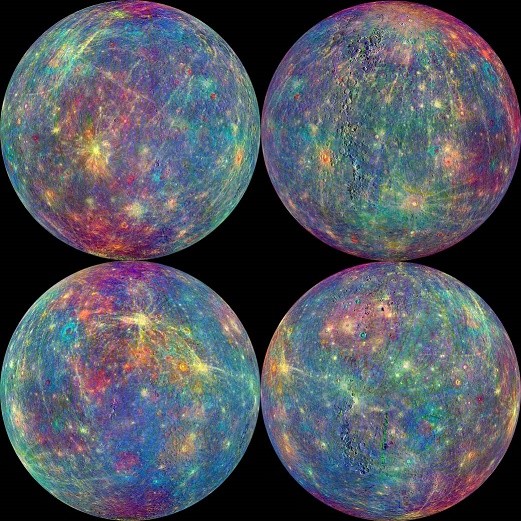NASA's Messenger spacecraft that has been orbiting the solar system's innermost planet Mercury has captured some spectacular images of the tiny world but unfortunately, this will be its last photograph as it will plunge into its fiery death and crash onto the planet's surface.
During its mission, the Messenger spacecraft (MErcury Surface, Space ENvironment, GEochemistry and Ranging) has already taken more than 250,000 photos ever since entering Mercury's orbit in March 2011. Launched in 2004, the probe began its journey towards the world that is heavily pockmarked with craters that orbits the sun for 116 days.
Now, the mission ends today as the spacecraft will hurl towards the surface of Mercury which has been running out of hydraulic fuel as it will be reeled in by the planet's gravitational forces at a speed of 8,750 miles per hour.
To date, Messenger is also the second spacecraft to visit Mercury after the Mariner 10's flyby during the 1970s.
These spectacular, psychedelic images are the result from the spectral data obtained from the spectrometer on the probe that reveals the mineral composition of Mercury's surface that was overlaid on black and white photos.
This tool called the Mercury Atmosphere and Surface Composition Spectrometer is among the several instruments from the scientific suite aboard the spacecraft that gathers data from the planet.
According to John Grunsfeld who is the associate administrator of the Science Mission Directorate at NASA headquarters in Washington, this is the first time in history that we have gathered real knowledge about the planet Mercury which is a fascinating world in our diverse solar system.
He adds that, spacecraft operations are now at its end but NASA and the rest of the world will be celebrating its successful mission as the journey begins in analyzing and studying all the data gathered from all the mission's years.
Latest discoveries of Messenger include that the planet is apparently covered with an "invisible paint" of black dust from carbon deposits of passing comets and impacts from micrometeorites.



























